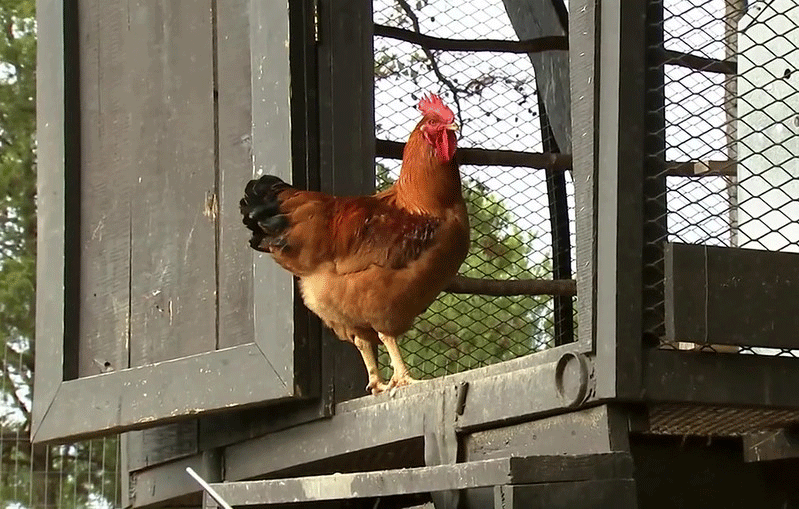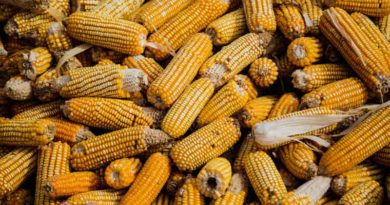A Comprehensive Guide to Raising Chickens for Eggs
Small-scale poultry farming has gained popularity in recent years, as more individuals and communities recognize its numerous benefits. By raising chickens for eggs, you not only contribute to sustainable agriculture but also create a fulfilling and engaging experience. In Missouri, we’re passionate about empowering you with the knowledge and resources to succeed in small-scale poultry farming, ensuring you have a lasting positive impact on the environment, your community, and your family’s health.
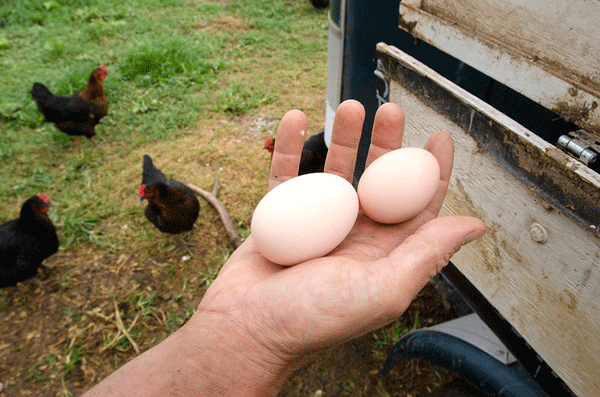
Environmental Benefits of Small-Scale Poultry Farming
Small-scale poultry farming is an environmentally friendly and sustainable way to produce eggs. By keeping a backyard flock, you can:
- Reduce Carbon Footprint: Locally produced eggs require less transportation and fewer resources compared to commercially farmed eggs, which helps reduce greenhouse gas emissions.
- Promote Soil Health: Chicken manure is an excellent fertilizer, rich in nutrients essential for plant growth. By using it in your garden, you enhance soil fertility and reduce the need for synthetic fertilizers.
- Support Biodiversity: Small-scale farms create diverse habitats that attract beneficial insects and wildlife, fostering a healthy ecosystem.
Community and Health Benefits
Raising chickens for eggs on a small scale offers several benefits to your community and personal health:
- Local Food Security: Producing eggs locally contributes to food security in your community, ensuring a consistent and reliable source of high-quality protein.
- Nutritional Benefits: Fresh, homegrown eggs often contain higher levels of essential nutrients, such as vitamins A, D, and E, as well as omega-3 fatty acids, compared to store-bought eggs.
- Educational Opportunities: Small-scale poultry farming provides an excellent opportunity for children and adults alike to learn about animal husbandry, responsibility, and sustainable agriculture.
Personal Satisfaction and Well-being
Caring for a flock of chickens can bring immense personal satisfaction and well-being, as it allows you to:
- Connect with Nature: Spending time outdoors caring for your chickens encourages a deeper connection with nature and the environment.
- Cultivate Mindfulness: The routine of tending to your chickens promotes mindfulness, providing an opportunity to focus on the present moment and relieve stress.
- Create a Sense of Purpose: Successfully raising a flock of chickens for eggs can instill a sense of pride and accomplishment, fostering personal growth and resilience.
By embracing small-scale poultry farming, you become an integral part of a sustainable agriculture movement that benefits the environment, your community, and your personal well-being. As you embark on this rewarding journey, We are here to guide and support you every step of the way.
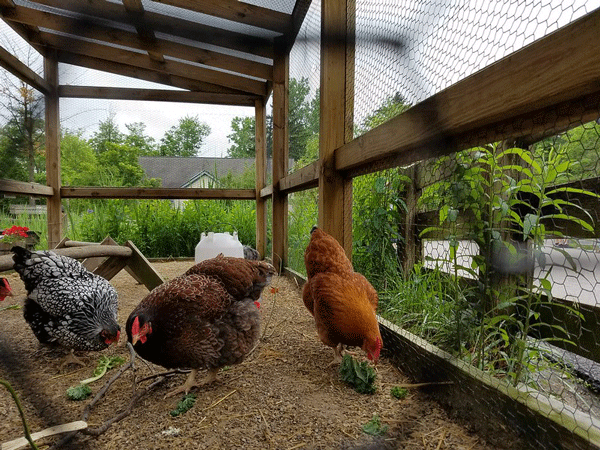
Selecting the Right Chicken Breeds for Egg Production: Factors to Consider and Top Recommendations
Choosing the right breed of chicken is a crucial aspect of raising chickens for eggs, as different breeds exhibit varying levels of productivity, adaptability, and temperament. To ensure you select the ideal breed for your specific needs and goals, consider the following factors and our top recommendations for high-producing and heritage chicken breeds.
Factors to Consider When Selecting a Chicken Breed
- Egg Production: Evaluate the average annual egg production of different breeds, considering both quantity and consistency throughout the year.
- Egg Size and Color: Consider your preferences for egg size and color, as different breeds lay eggs in various sizes and shades, such as white, brown, blue, or green.
- Climate Adaptability: Choose a breed that thrives in your local climate, whether it’s hot, cold, or humid.
- Temperament: The disposition of a breed may influence your choice, as some are more docile and friendly, while others may be more assertive or flighty.
- Dual-Purpose Breeds: If you’re interested in raising chickens for both eggs and meat, consider dual-purpose breeds that provide both high egg production and substantial meat yield.
- Heritage Breeds: For those seeking unique and attractive birds or looking to support the conservation of rare and endangered breeds, heritage chickens may be an appealing option.
Top High-Producing Chicken Breeds
For maximum egg production, consider the following top-performing breeds:
- Rhode Island Red: Hardy and adaptable, Rhode Island Reds are renowned layers, producing approximately 250-300 large brown eggs per year.
- White Leghorn: These prolific layers of white eggs boast an annual production of around 280-320 eggs and are highly efficient in converting feed to eggs, making them a cost-effective choice.
- Plymouth Rock: A versatile dual-purpose breed, Plymouth Rocks consistently produce approximately 200-250 brown eggs annually and are also valued for their meat.
- Sussex: With their friendly nature and high egg production, Sussex chickens yield around 250-300 large brown eggs per year.
Top Heritage Chicken Breeds
Heritage breeds offer unique and attractive characteristics, while still maintaining respectable egg production. Some popular heritage breeds include:
- Australorp: A calm and friendly breed, Australorps are known for their dark brown eggs and can produce around 250 eggs per year.
- Buff Orpington: These gentle giants boast beautiful golden feathers and lay brown eggs, with an annual production of around 175-200 eggs.
- Wyandotte: Wyandottes are both visually striking and productive, laying around 200 brown eggs per year.
- Ameraucana: This breed is known for its distinct blue eggs and friendly nature, with an annual egg production of approximately 250 eggs.
By carefully considering factors such as egg production, adaptability, temperament, and purpose, you can select the ideal chicken breed for your small-scale poultry farming venture. Whether you opt for a high-producing breed or a heritage breed, your choice will significantly impact the success and satisfaction of raising chickens for eggs.
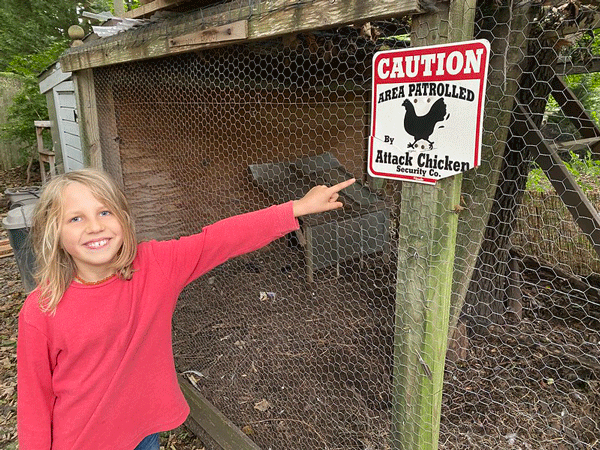
Creating an Ideal Chicken Coop: Design Principles and Tips for Success
A well-designed chicken coop is essential for the health, safety, and productivity of your flock. When creating an ideal chicken coop, it’s crucial to consider various factors and incorporate essential elements to ensure your chickens’ well-being. Here are the key design principles and tips for success in building the perfect chicken coop.
Essential Elements of a Chicken Coop
To promote the health and happiness of your chickens, make sure to include the following elements in your coop design:
- Ventilation: Proper ventilation is vital for maintaining a healthy environment in your coop. Include vents, windows, or other openings that allow fresh air to circulate while minimizing drafts.
- Insulation: Insulating your coop helps regulate the temperature inside, ensuring your chickens stay comfortable in hot and cold weather. Use insulation materials like rigid foam, fiberglass batts, or reflective foil to retain heat in the winter and reflect it away in the summer.
- Roosting Bars: Chickens need a place to perch and sleep off the ground. Provide roosting bars at a height of 2-4 feet for your flock, spaced about 12-18 inches apart, and 8-10 inches away from the wall to accommodate their tail feathers.
- Nesting Boxes: Designate comfortable and private nesting areas for your hens to lay eggs. Provide one nesting box for every 4-5 hens, and fill them with soft nesting materials like straw, wood shavings, or shredded paper.
Coop Size and Space Requirements
The size of your chicken coop should be determined by the number of chickens you plan to raise. Here are some general guidelines:
- Indoor Coop Space: Provide 2-3 square feet per chicken inside the coop. This space allocation ensures your chickens have enough room to move comfortably and prevents overcrowding, which can lead to stress, illness, and reduced egg production.
- Outdoor Run Space: Allocate 8-10 square feet per chicken in the outdoor run. A spacious run allows your chickens to engage in natural behaviors like scratching, dust bathing, and foraging, contributing to their overall well-being.
Additional Chicken Coop Design Considerations
Keep these additional design considerations in mind when creating your ideal chicken coop:
- Predator Protection: Ensure your coop and run are secure from predators by using strong, durable materials and hardware cloth for fencing. Bury the fencing at least 12 inches deep to deter digging predators, and install secure latches on doors and windows.
- Ease of Cleaning: Design your coop with easy cleaning in mind. Incorporate removable roosts, nesting boxes, and a droppings tray to make cleaning and maintenance more manageable.
- Lighting: Natural light is essential for egg production, so include windows or translucent roofing materials to allow sunlight into the coop. During shorter days, consider supplemental lighting with a timer to maintain consistent egg production.
- Access to Food and Water: Make sure your chickens have easy access to fresh food and water both inside the coop and in the outdoor run. Hang feeders and waterers at the height of your chickens’ backs to prevent waste and contamination.
By incorporating these essential elements and design considerations, you can create an ideal chicken coop that ensures the health, safety, and productivity of your chickens. A well-designed coop will provide a comfortable home for your flock, contributing to their overall well-being and the success of your small-scale poultry farming venture.
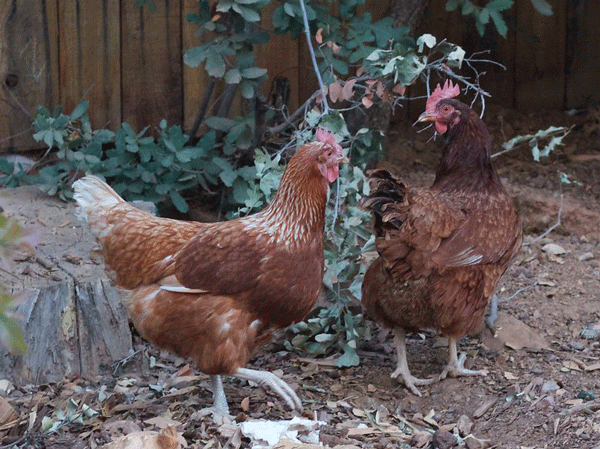
Optimal Nutrition for Laying Hens: Key Components and Dietary Supplements
Providing your laying hens with optimal nutrition is vital for their health and productivity. A well-balanced diet ensures your hens produce high-quality eggs, maintain strong immune systems, and exhibit good overall health. This guide explores the key components of a nutritious diet for laying hens and the dietary supplements that can further enhance their well-being and egg production.
Key Components of a Nutritious Diet for Laying Hens
To support the health and productivity of your laying hens, ensure their diet includes the following essential components:
- Protein: Protein is crucial for muscle development, feather growth, and egg production. Aim to provide a diet containing 16-18% protein for optimal results. Common protein sources include soybean meal, fish meal, and meat meal.
- Energy: Carbohydrates and fats provide the necessary energy for laying hens to maintain their body functions and produce eggs. Energy sources in poultry feed include corn, wheat, barley, and vegetable oil.
- Calcium: Calcium is essential for strong eggshells and bone health. Feed your hens a diet containing 3.5-4.5% calcium or offer a separate dish of crushed oyster shells to ensure they receive the required amount.
- Vitamins and Minerals: A well-balanced feed should contain essential vitamins and minerals, such as vitamins A, D, and E, as well as phosphorus and manganese, which promote overall health and egg production.
- Water: Fresh, clean water should always be available to your chickens. Water is essential for digestion, temperature regulation, and egg production.
Dietary Supplements for Laying Hens
In addition to a balanced feed, consider offering your hens the following supplements to further enhance their health and egg production:
- Grit: Chickens require grit to help break down food in their gizzard. Offer insoluble grit, such as crushed granite, in a separate dish for your hens.
- Greens: Providing leafy greens like lettuce, kale, or spinach can add beneficial vitamins and minerals to your chickens’ diet. Greens can be offered as a treat in moderation to maintain a balanced diet.
- Scratch Grains: Scratch grains, such as cracked corn, wheat, or oats, can be fed as an occasional treat. Scratch grains should be offered sparingly, as they are high in energy but low in essential nutrients. Overfeeding scratch grains can lead to obesity and reduced egg production.
By ensuring your laying hens receive a well-balanced diet containing essential nutrients and offering beneficial supplements, you can promote their overall health and productivity. Optimal nutrition is a critical aspect of successful small-scale poultry farming and will contribute to the long-term success of your egg-laying operation.
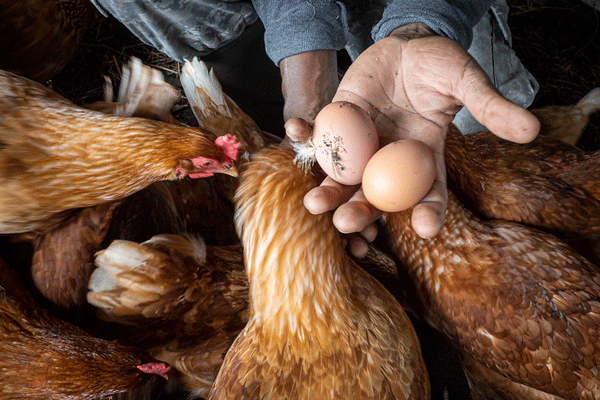
Maintaining Flock Health: Prevention, Monitoring, and Treatment Strategies
Ensuring the health of your flock is crucial for a successful small-scale poultry farming venture. A healthy flock will produce high-quality eggs, exhibit fewer behavioral issues, and require less intervention. This guide outlines the essential strategies for maintaining flock health, including prevention, monitoring, and treatment.
Preventative Measures for Flock Health
Taking proactive steps to prevent illness and injury in your flock is the foundation of maintaining good health. Here are some key preventative measures:
- Biosecurity: Implement biosecurity practices to minimize the risk of disease transmission. These include limiting visitors to your coop, wearing dedicated footwear and clothing when interacting with your flock, and isolating new or sick birds from the rest of the flock.
- Vaccination: Consult with a veterinarian to determine which vaccinations are necessary for your chickens, based on the prevalent diseases in your area. Vaccinations can help protect your flock from common poultry illnesses.
- Parasite Control: Regularly check your chickens for external parasites such as mites and lice, and treat them as needed with approved products. Control internal parasites, like worms, by providing a clean environment and adhering to a deworming schedule as recommended by your veterinarian.
- Clean Environment: Keep your coop and outdoor run clean and dry to prevent the growth of harmful bacteria and fungi. Regularly remove droppings, replace bedding, and sanitize feeders and waterers to maintain a healthy environment.
Monitoring Flock Health
Closely monitoring your flock will help you identify potential health issues before they become severe. Here are some strategies to ensure your flock’s well-being:
- Daily Observation: Observe your chickens daily for signs of illness or injury, such as lethargy, loss of appetite, lameness, or changes in egg production. Promptly address any issues you notice to minimize their impact on the flock.
- Regular Weight Checks: Monitor your chickens’ weight to ensure they are maintaining a healthy body condition. Weight loss or gain could indicate an underlying health issue.
- Record Keeping: Maintain records of your flock’s health, including vaccinations, treatments, egg production, and any observed health issues. Records can help you track trends and identify recurring problems.
Treatment Strategies for Flock Health
If you identify a health issue in your flock, take the following steps to address the problem and protect the overall health of your chickens:
- Isolation: Immediately isolate any sick or injured birds from the rest of the flock to prevent the spread of disease or further injury.
- Veterinary Consultation: Consult with a veterinarian who specializes in poultry to diagnose and treat the issue. Follow their recommendations for treatment and management.
- Medication: Administer any prescribed medications or treatments as directed by your veterinarian. Monitor your flock for any side effects or changes in condition.
- Reintroduction: Once a sick or injured bird has fully recovered and is no longer contagious, gradually reintroduce it to the flock, closely monitoring for any signs of stress or conflict.
By implementing preventative measures, regularly monitoring your flock’s health, and promptly addressing any issues that arise, you can maintain the health and productivity of your chickens. A healthy and well-cared-for flock is essential for the long-term success of your small-scale poultry farming operation.
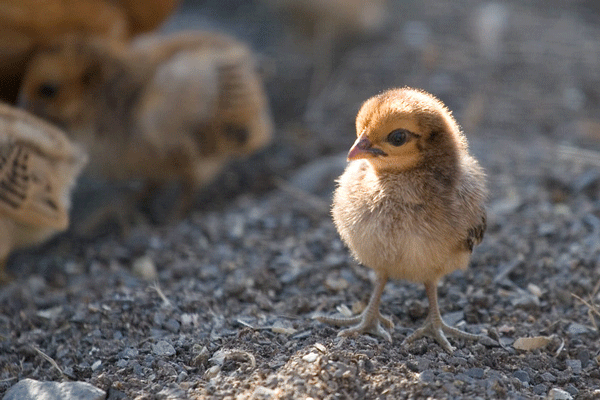
Lifecycle of a Laying Hen: Key Stages and Milestones
Understanding the lifecycle of a laying hen is essential for managing your flock effectively and ensuring their health and productivity. This guide explores the key stages and milestones of a laying hen’s life, from hatching to the end of its laying cycle.
Stage 1: Hatching and Brooding (0-6 Weeks)
- Hatching: Fertile eggs hatch after approximately 21 days of incubation. Chicks absorb the yolk sac during the final days of incubation, which provides them with essential nutrients for the first few days of life.
- Brooding: During the brooding stage, chicks require a warm, dry environment with a heat source, such as a heat lamp or brooder plate. The temperature should be maintained around 95°F (35°C) during the first week and gradually reduced by 5°F (3°C) per week until they are fully feathered and can regulate their body temperature.
Stage 2: Growing and Development (6-20 Weeks)
- Feather Development: At 6 weeks of age, chicks should be fully feathered and no longer require supplemental heat. They will continue to grow and develop their adult plumage.
- Diet Transition: Transition chicks from a starter feed to a grower feed at around 6-8 weeks of age. Grower feed contains the appropriate balance of nutrients to support growth and development during this stage.
- Socialization: Chicks begin to establish a pecking order within the flock, which is essential for maintaining harmony and minimizing conflict. Provide ample space and resources (such as feeders and waterers) to reduce competition and aggression.
Stage 3: Sexual Maturity and Onset of Laying (20-24 Weeks)
- Sexual Maturity: Hens typically reach sexual maturity between 20-24 weeks of age, depending on the breed. At this stage, hens may exhibit signs of readiness to lay, such as squatting or spending more time in the nesting boxes.
- Diet Transition: Transition your hens to a layer feed, which contains the necessary nutrients, such as calcium and protein, to support egg production.
- First Eggs: Hens will begin laying their first eggs, which may be smaller and less consistent in frequency. Over time, egg size and production should normalize as the hen’s reproductive system matures.
Stage 4: Peak Production and Decline (1-3 Years)
- Peak Production: Hens typically reach peak egg production at around 1 year of age, with most breeds laying an egg every 24-26 hours during this period. Egg production can be influenced by factors such as diet, lighting, and overall health.
- Molting: Hens may undergo a natural molt, usually in the fall, which is a process of shedding and regrowing feathers. Egg production may temporarily decline or cease during molting.
- Decline in Production: As hens age, their egg production will gradually decline. By 3 years of age, most hens will lay eggs at a significantly reduced rate compared to their peak production.
Stage 5: Retirement and End of Life
- Retirement: Once a hen’s egg production has substantially decreased, she may be considered “retired” from laying. Retired hens can continue to live as pets or be used for other purposes, such as pest control or fertilizer production.
- End of Life: The lifespan of a laying hen varies depending on the breed and individual health factors. On average, laying hens live for 5-8 years, although some may live longer with proper care.
Understanding the lifecycle of a laying hen is crucial for managing your flock effectively, providing appropriate care, and maximizing egg production. By being knowledgeable about each stage of a hen’s life and the associated milestones, you can better meet their needs and support their overall well-being. A well-cared-for flock will not only ensure the long-term success of your small-scale poultry farming operation but also contribute to the satisfaction and enjoyment of raising healthy, productive laying hens.
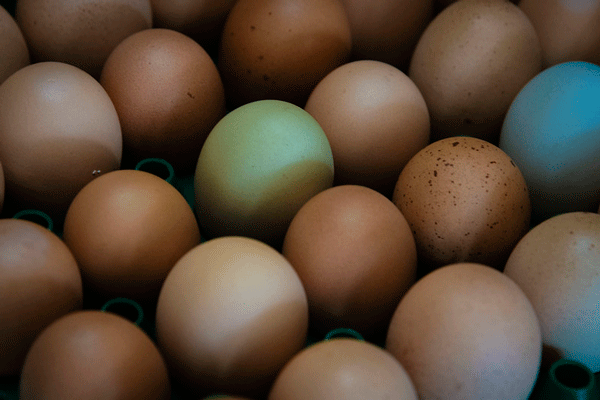
Frequently Asked Questions about Raising Chickens for Eggs
Q: What are the best chicken breeds for egg production?
A: Popular breeds for egg production include the White Leghorn, Rhode Island Red, Sussex, and Plymouth Rock. These breeds are known for their high egg production, hardiness, and adaptability to various climates and environments.
Q: How many eggs can I expect from a laying hen?
A: A healthy laying hen can lay an egg every 24-26 hours during peak production, which usually occurs around 1 year of age. The number of eggs produced depends on factors such as breed, diet, lighting, and overall health.
Q: What should I feed my laying hens to support optimal egg production?
A: Provide your laying hens with a balanced layer feed that contains 16-18% protein, 3.5-4.5% calcium, and essential vitamins and minerals. Supplement their diet with crushed oyster shells for additional calcium and offer grit to aid in digestion.
Q: How can I maintain a clean and healthy environment for my chickens?
A: Regularly remove droppings, replace bedding, and sanitize feeders and waterers to prevent the growth of harmful bacteria and fungi. Provide adequate ventilation and maintain a dry environment to minimize the risk of respiratory issues and disease.
Q: How can I ensure the health of my flock?
A: Implement biosecurity measures, vaccinate against common diseases, monitor your flock for signs of illness or injury, and consult with a veterinarian when needed. Provide a well-balanced diet and clean environment to support overall health.
Q: When should I introduce a layer feed to my chickens?
A: Transition your chickens to a layer feed when they reach sexual maturity, typically between 20-24 weeks of age. Layer feed contains the necessary nutrients, such as calcium and protein, to support egg production.
Q: What is the average lifespan of a laying hen?
A: The average lifespan of a laying hen is 5-8 years, depending on factors such as breed, individual health, and the quality of care provided. Hens typically reach peak egg production around 1 year of age, with a gradual decline in production thereafter.
Q: What is the purpose of providing grit to my chickens?
A: Chickens require grit to help break down food in their gizzard, which is an essential part of their digestive process. Offer insoluble grit, such as crushed granite, in a separate dish for your chickens to access as needed.
Raising chickens for eggs on a small scale can be a rewarding and sustainable endeavor. By choosing the right breeds, providing a well-designed coop, offering proper nutrition, and maintaining flock health, you can ensure a successful and productive egg-laying operation.

